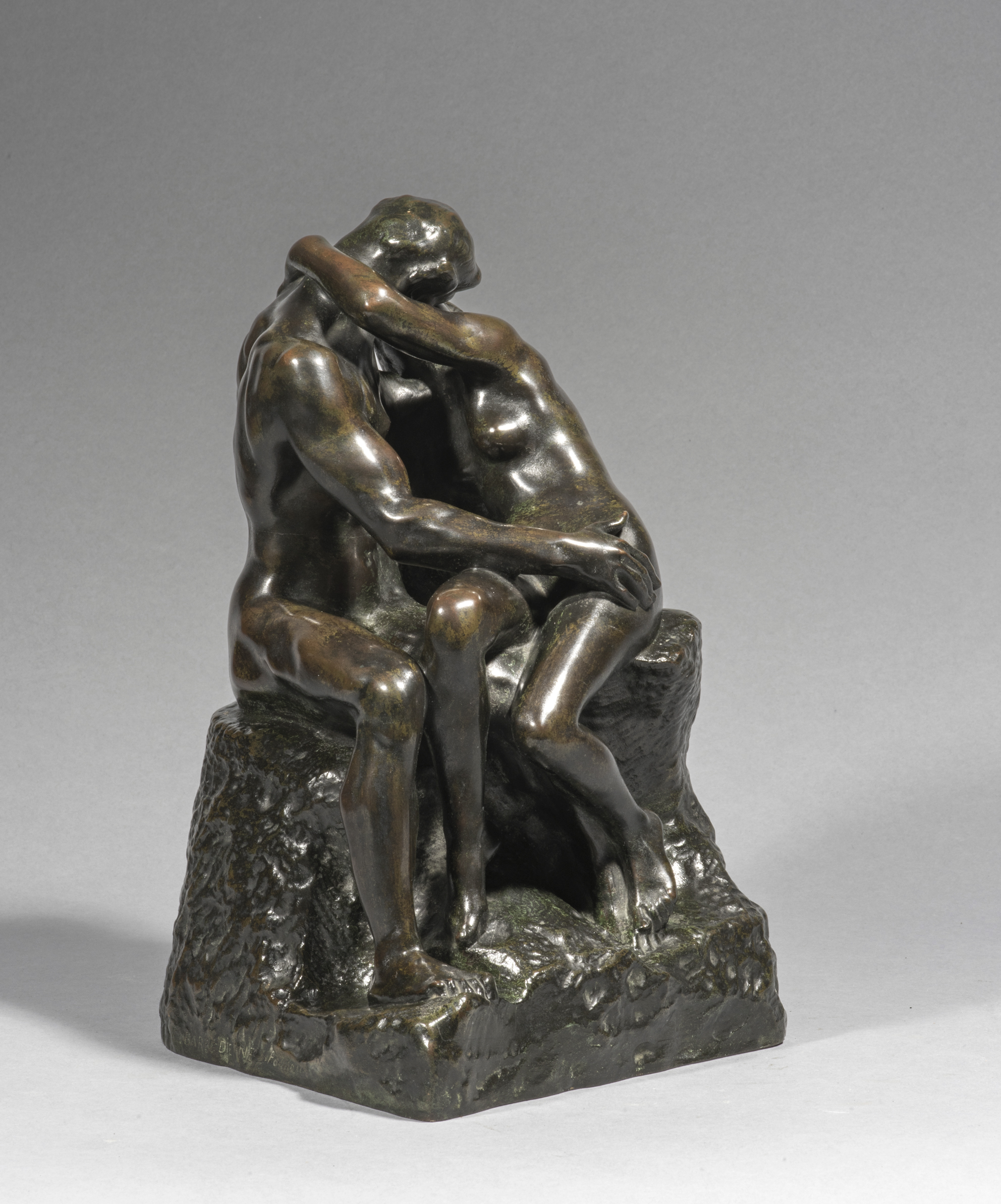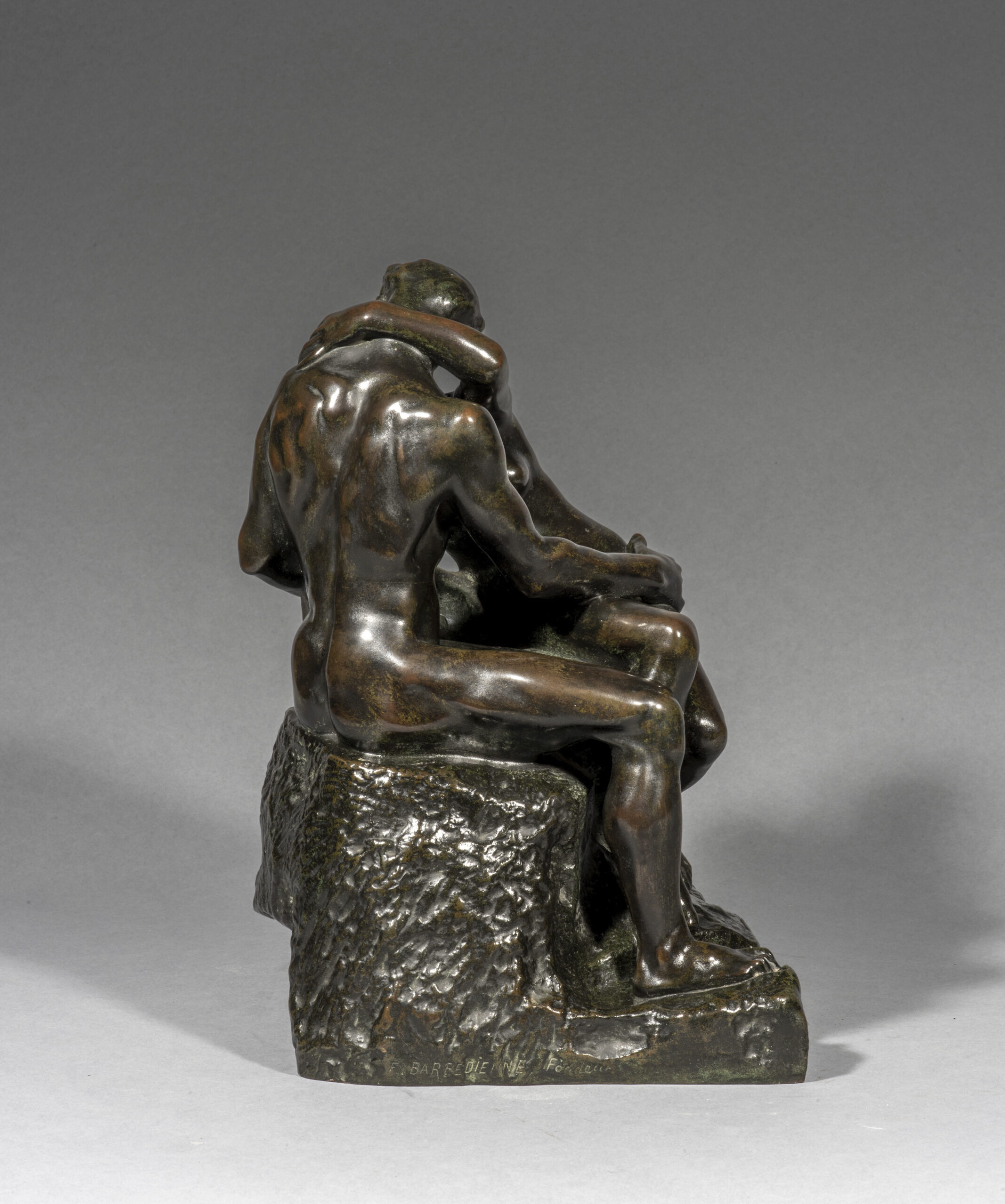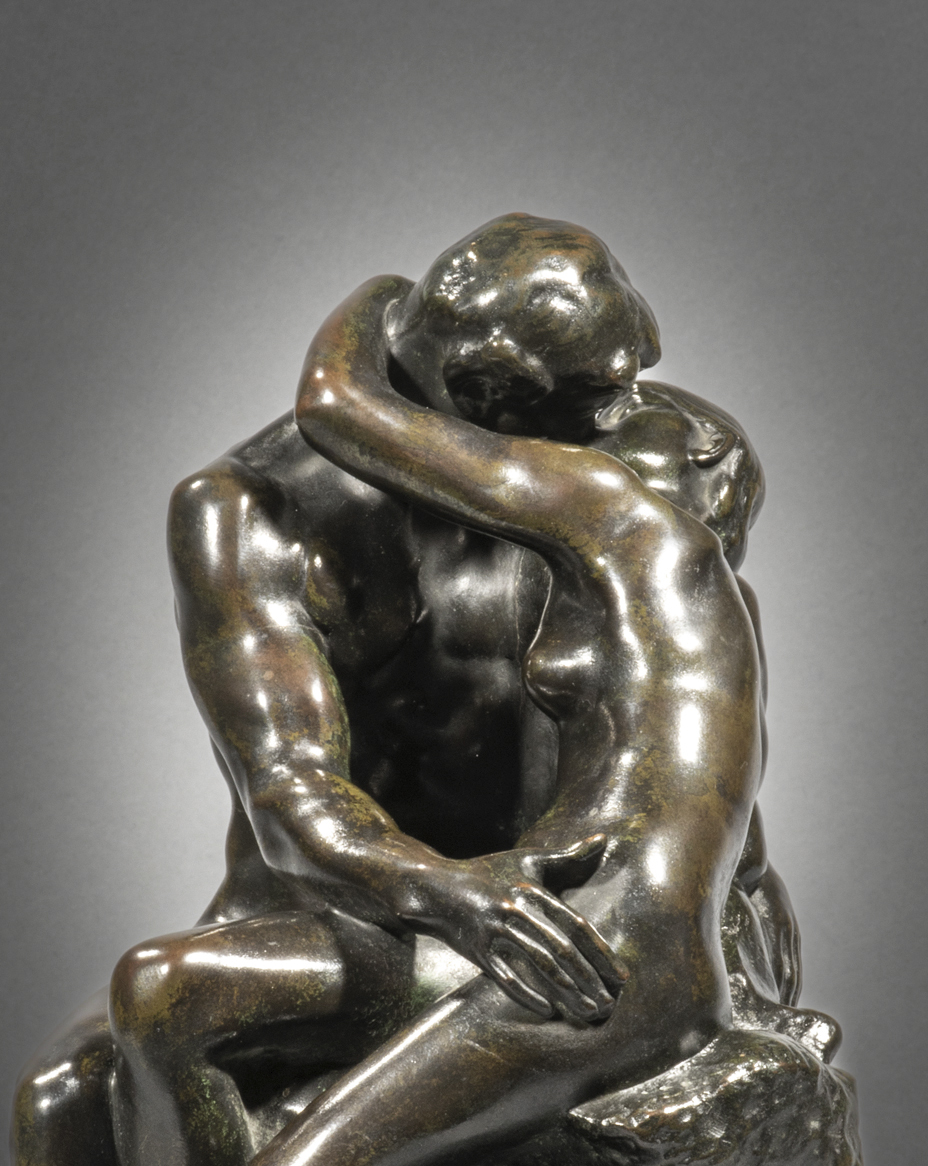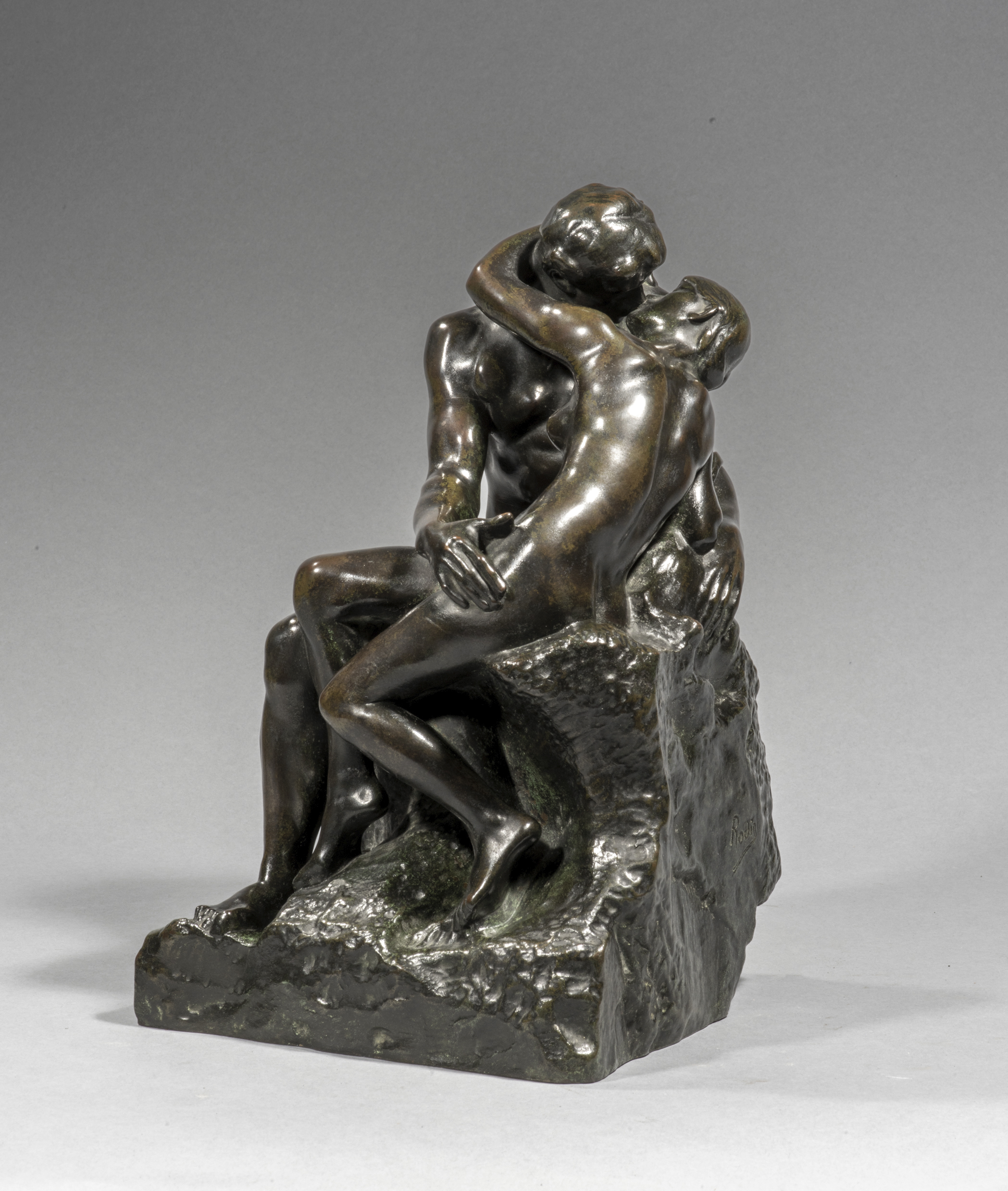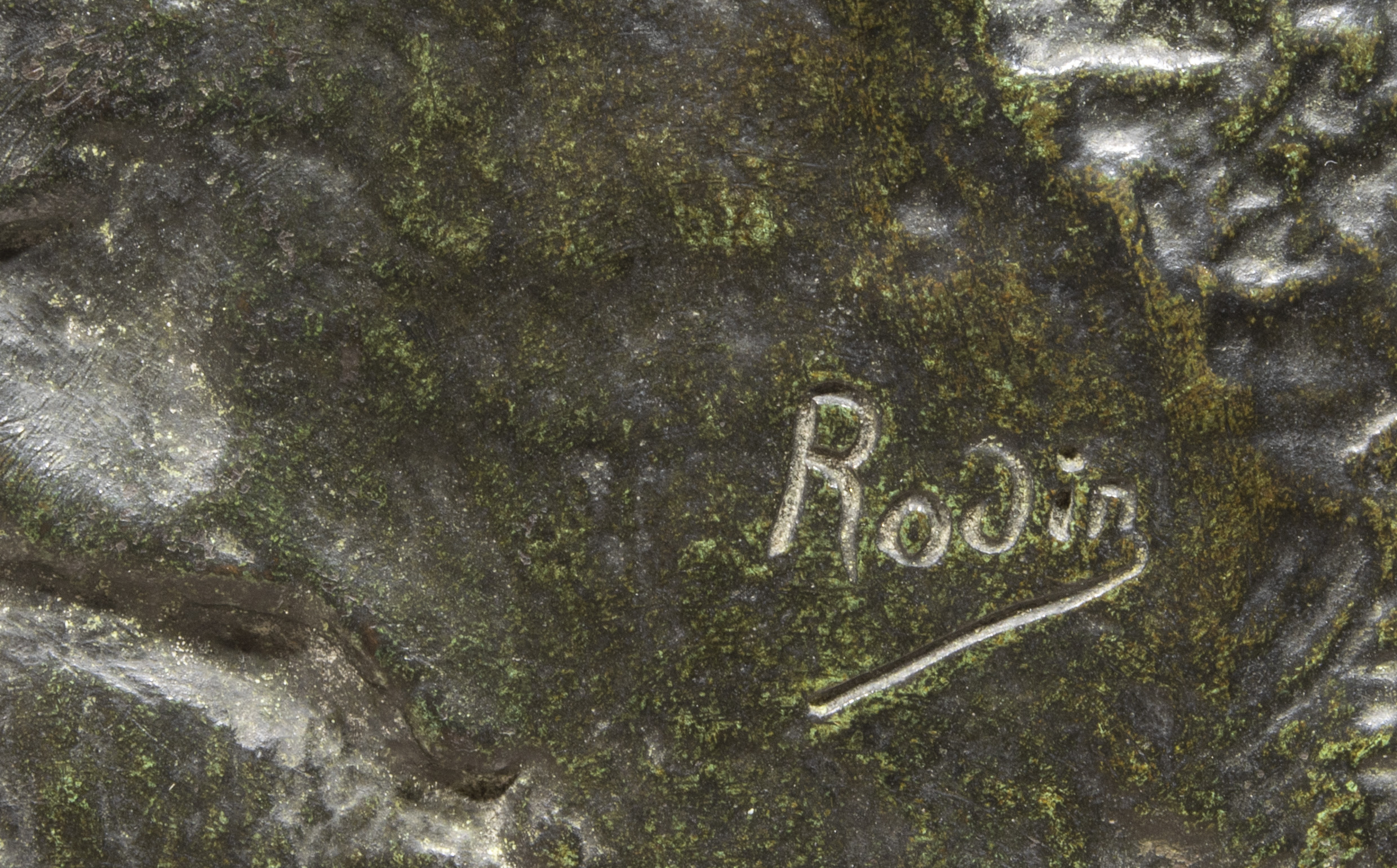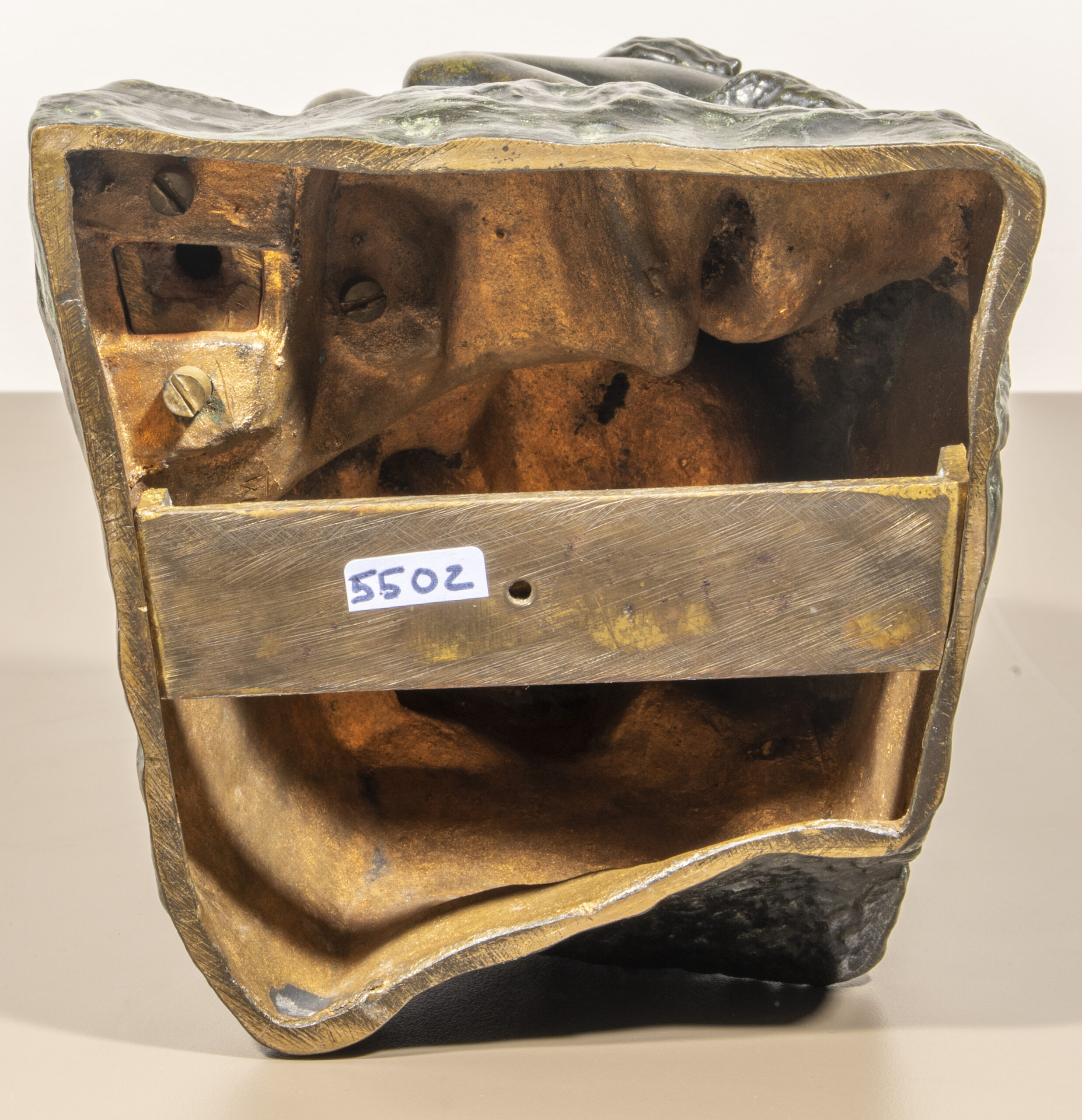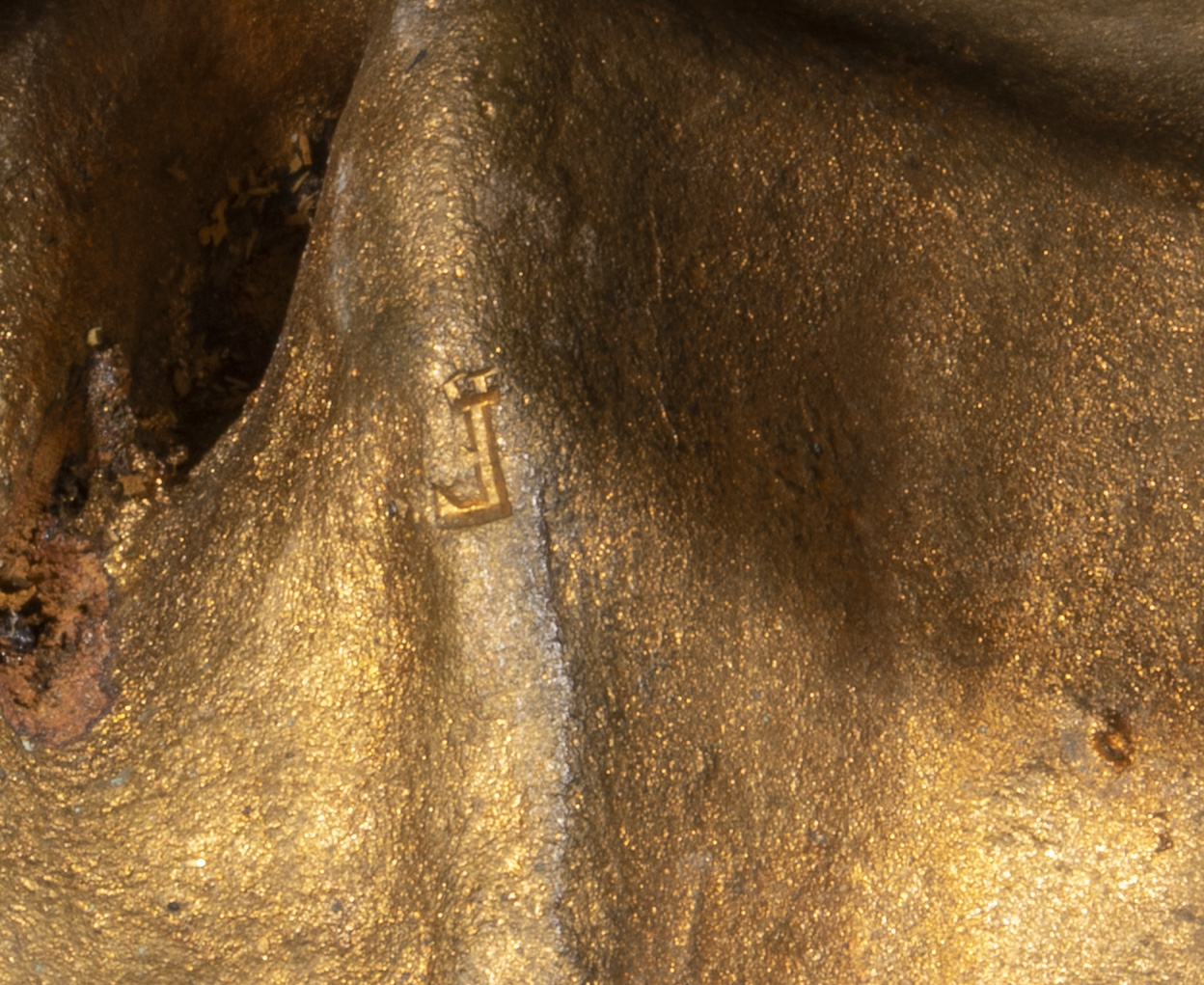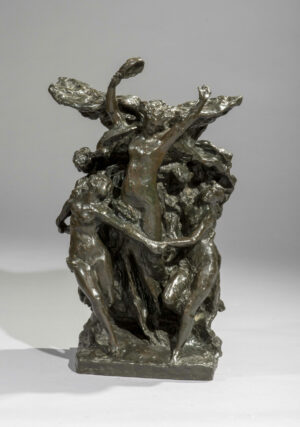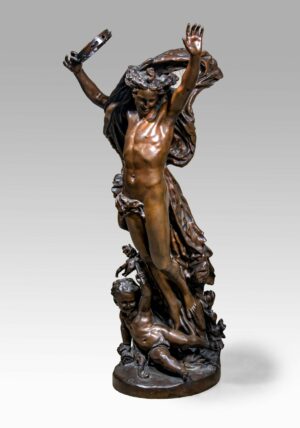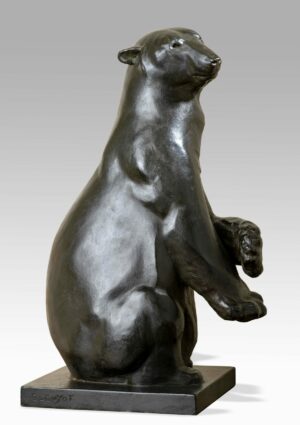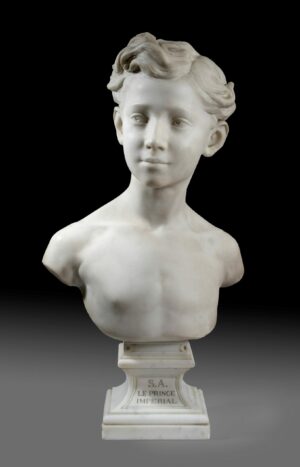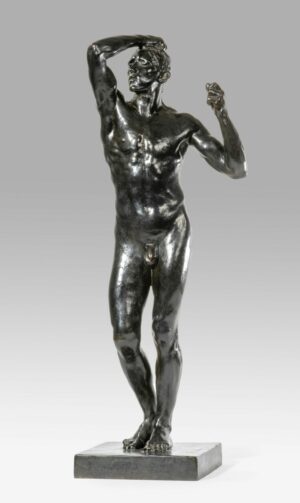Description
The forbidden love between Paolo and Francesca (Fifth Canto of Dante’s Inferno), and the eternal damnation, which resulted from this, is one of the 19th century’s favourite themes, from Ingres and Delacroix to Ary Scheffer and Cabanel. Rodin chose to depict the two lovers as they become aware of their feelings in a tender and carnal embrace. In 1885, Octave Mirbeau in Des artistes described the sculpture in its almost finished version in terracotta which was started in 1882: “The young and charming body in which the artist has brought together, as if for pleasure, all the delicate and sensual beauties of women, her arms wrapped around her lover’s neck, in a gesture both passionate and chaste, abandons herself to Paolo’s embrace and kiss, whose flesh trembles with pleasure and whose youthful athletic strength is shown in an elegant and powerful musculature, a true incarnation of male beauty, as Françoise de Rimini is that of women’s grace”. In 1886-1887, Rodin firstly decided to install the sculpture in the centre of the left-hand door of The Gates of Hell, but finally removed it because the figure, most harmonious and evoking a state of pure bliss, did not fit in with the composition. Exhibited in Paris and then in Brussels the following year (1887), it was named Le Baiser.
Its success earned it to be commissioned in marble by the Direction des Beaux-Arts on 31 January 1888. Rodin took almost ten years to deliver it and did not consider exhibiting it until 1898 at the Salon de la Société nationale des beaux-arts, as a counterpart to the daring Balzac. In 1900, however, the marble copy, which in the meantime had been delivered to the Fine Arts Department, was presented at the Universal Exhibition. From 1901 to 1918, it became one of the masterpieces of the Musée du Luxembourg before being deposited in the Musée Rodin when it was created in 1918.
On July 6, 1898, Auguste Rodin agreed with the Leblanc-Barbedienne foundry on a 10 year renewable edition contract for Le Baiser in four sizes and unlimited quantity. The 25cm scale is one among the initial sizes of the subject, edited as soon as 1898. In 1901, and then in 1904, further editions of the sculpture came out in two other sizes.
Around 93 copies of the 2nd small scale reduction have been inventoried with a height of 25.7 cm, produced between 1898 and 1918.The sculpture itself, its mount, the founder’s stamp as well as the inscriptions carved inside are common to the techniques and practices of the Barbedienne workshops.The quality of its sand casting and that of its nuanced patina allow the full appreciation of the beauty and force of this major artwork of the end of the 19th century.

